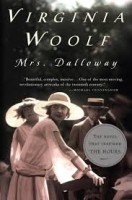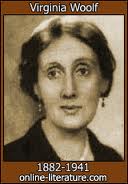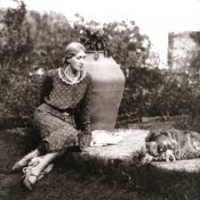
- This event has passed.
Book Into Film – Mrs Dalloway
September 3, 2014 @ 6:00 pm - 8:00 pm
Mrs. Dalloway
Mrs Dalloway (published on 14 May 1925) is a novel by Virginia Woolf that details a day in the life of Clarissa Dalloway, a fictional high-society woman in post-First World War England. It is one of Woolf’s best-known novels.
Created from two short stories, “Mrs Dalloway in Bond Street” and the unfinished “The Prime Minister,” the novel addresses Clarissa’s preparations for a party she will host that evening. With an interior perspective, the story travels forwards and back in time and in and out of the characters’ minds to construct an image of Clarissa’s life and of the inter-war social structure. In October 2005, Mrs Dalloway was included on TIME magazine’s list of the 100 best English-language novels written since 1923. According to thegreatestbooks.org, a site which uses algorithms to numerically determine the best-received books, Mrs. Dalloway is the 34th most critically acclaimed work of fiction ever made.
Plot Summary:
Clarissa Dalloway goes around London in the morning, getting ready to host a party that evening. The nice day reminds her of her youth spent in the countryside in Bourton and makes her wonder about her choice of husband; she married the reliable Richard Dalloway instead of the enigmatic and demanding Peter Walsh, and she “had not the option” to be with Sally Seton. Peter reintroduces these conflicts by paying a visit that morning.
Septimus Warren Smith, a First World War veteran suffering from deferred traumatic stress, spends his day in the park with his Italian-born wife Lucrezia, where Peter Walsh observes them. Septimus is visited by frequent and indecipherable hallucinations, mostly concerning his dear friend Evans who died in the war. Later that day, after he is prescribed involuntary commitment to a psychiatric hospital, he commits suicide by jumping out of a window.
Clarissa’s party in the evening is a slow success. It is attended by most of the characters she has met in the book, including people from her past. She hears about Septimus’ suicide at the party and gradually comes to admire this stranger’s act, which she considers an effort to preserve the purity of his happiness.
In Mrs Dalloway, all of the action, aside from the flashbacks, takes place on a day in June. It is an example of stream of consciousness storytelling: every scene closely tracks the momentary thoughts of a particular character. Woolf blurs the distinction between direct and indirect speech throughout the novel, freely alternating her mode of narration between omniscient description, indirect interior monologue, and soliloquy. The narration follows at least twenty characters in this way, but the bulk of the novel is spent with Clarissa Dalloway and Septimus Smith.
Because of structural and stylistic similarities, Mrs Dalloway is commonly thought to be a response to James Joyce‘s Ulysses, a text that is often considered one of the greatest novels of the twentieth century (though Woolf herself, writing in 1928, apparently denied this). In her essay “Modern Fiction,” Woolf praised Ulysses, saying of the scene in the cemetery, “on a first reading at any rate, it is difficult not to acclaim a masterpiece.” The Hogarth Press, run by her and her husband Leonard, had to turn down the chance to publish the novel in 1919, because of the obscenity law in England, as well as the practical issues regarding publishing such a substantial text.
Woolf laid out some of her literary goals with the characters of Mrs Dalloway while still working on the novel. A year before its publication, she gave a talk at Cambridge University called “Character in Fiction,” revised and retitled later that year as “Mr. Bennett and Mrs. Brown.
Citing: http://en.wikipedia.org/wiki/Mrs_Dalloway
Synopsis
Born into a privileged English household in 1882, writer Virginia Woolf was raised by free-thinking parents. She began writing as a young girl and published her first novel, The Voyage Out, in 1915. Her nonlinear, free form prose style inspired her peers and earned her much praise. She was also known for her mood swings and bouts of deep depression. She committed suicide in 1941, at the age of 59.
Early Life
English writer Virginia Woolf was raised in a remarkable household. Her father, Sir Leslie Stephen, was an historian and author, and also one of the most prominent figures in the golden age of mountaineering. Woolf’s mother, Julia Prinsep Stephen (née Jackson), had been born in India and later served as a model for several Pre-Raphaelite painters. She was also a nurse and wrote a book on the profession. Woolf had three full siblings and four half-siblings; both of her parents had been married and widowed before marrying each other. The eight children lived under one roof at 22 Hyde Park Gate, Kensington.
Two of Woolf’s brothers had been educated at Cambridge, but all the girls were taught at home and utilized the splendid confines of the family’s lush Victorian library. Moreover, Woolf’s parents were extremely well connected, both socially and artistically. Her father was a friend to William Thackeray and George Henry Lewes, as well as many other noted thinkers. Her mother’s aunt was the famous 19th century photographer Julia Margaret Cameron. For these reasons and more, Virginia Woolf was ideally situated to appreciate and experiment with the art of writing.
From the time of her birth, on January 25, 1882, until 1895, Woolf spent her summers in St. Ives, a beach town at the very southwestern tip of England. The Stephens’ summer home, Talland House, which is still standing today, looks out at the dramatic Porthminster Bay and is a short walking distance to the Godrevy lighthouse. In her later memoirs, Woolf recalled St. Ives with a great fondness. In fact, she incorporated scenes from those early summers into her modernist novel, To the Lighthouse (1927).
As a young girl, Virginia was light-hearted and playful. She started a family newspaper, the Hyde Park Gate News, to document her family’s humorous anecdotes. She had, however, been traumatized at the age of six when her half-brothers George and Gerald Duckworth sexually abuse her. This dark spot was only made deeper and more permanent when her mother suddenly died at the age of 49. The hormones of early adolescence and the undeniable reality of this huge loss spun Woolf into a nervous breakdown, only made worse when two years later, her half-sister Stella also died.
Despite her misery, Woolf managed to take classes in German, Greek and Latin at the Ladies’ Department of King’s College London. Her four years of study introduced her to a handful of radical feminists at the helm of educational reforms. In 1904, her father died. His passing was climatic; during this time she was institutionalized. Virginia Woolf’s dance between literary expression and personal desolation would continue for the rest of her life.
When Virginia was in her early 20s, her sister Vanessa and brother Adrian sold the family home in Hyde Park Gate, and purchased a house in the Bloomsbury area of London. Through her siblings’ connections, Virginia became acquainted with several members of the Bloomsbury Group, a circle of intellectuals and artists who became famous in 1910 for their Dreadnought hoax, a practical joke in which members of the group dressed up as a delegation of Ethiopian royals and successfully persuaded the English Royal Navy to show them their warship, the HMS Dreadnought. Woolf disguised herself as a bearded man. After the outrageous act, Leonard Woolf, a writer and a member of the group, took a fancy to Virginia. By 1912, she and Leonard were married. The two shared a passionate love for one another for the rest of their lives.
Writings
Several years before marrying Leonard, Virginia had begun working on her first novel. The original title was Melymbrosia. After nine years and innumerable drafts, it was released in 1915 as The Voyage Out. Woolf used the book to experiment with several literary tools, including compelling and unusual narrative perspectives, dream-states and free association prose. In 1925, Mrs. Dalloway, her fourth novel, was released to rave reviews. The mesmerizing story interweaves interior monologues and raises issues of feminism, mental illness and homosexuality in post-World War I England. Since it first went press, Mrs. Dalloway has been turned into a movie (1997) and been the subject of a Michael Cunningham novel and film, The Hours (2002).
Throughout her career, Woolf spoke regularly at colleges and universities, penned dramatic letters, wrote moving essays and self-published a long list of short stories. By her mid-forties, she had established herself as both an intellectual and an innovative thinker and writer. Her ability to balance dream-like scenes with deeply tense plot lines earned her incredible respect from peers and the public alike. Despite her outward success, she continued to regularly suffer from bouts of depression and dramatic mood swings.
Death
Woolf’s husband, Leonard, always at her side, was quite aware of any signs that pointed to his wife’s internal demise. He saw, as she was working on what would be her final manuscript (published posthumously), Between the Acts, she was sinking into a bottomless pit. Leonard, who was Jewish, was certainly in danger of being captured by the Nazis, and the couple’s London home had been destroyed during the Blitz. These seemingly insurmountable facts motivated Woolf’s decision to, on March 28, 1941, pull on her overcoat, walk out into the River Ouse and fill her pockets with stones. As she waded into the water, the stream took her with it. The authorities found her some three weeks later. Although her popularity decreased after World War II, her stories rang true again for readers during the feminist movement of the 1970s. Woolf remains one of the most well known authors of the 21st century.
 Fort Bragg Library Mendocino County, California
Fort Bragg Library Mendocino County, California



